#islamic history
Text
The Axis Of Assistance

Any leader who supports Zionist Israel is a traitor to Palestine and the Muslim Ummah.
Rabyna Choudhry
#photography#palestine#gaza#palestinians#free palestine#islam#islamophobia#israel#Ummah#muslim ummah#one ummah#Islamic wor#islamic world#Muslim wo#muslim world#Arab wo#arab world#Al aqsa#al aqsa mosque#al aqsa flood#al aqsa storm#al aqsa hospital#domeoftherock#jerusalem#Islamic hi#islamic history#Muslim i#Muslim hi#muslim history#Arab hi
23 notes
·
View notes
Text
Abu al-Faraj al-Isfahani’s Kitab al-Aghani records the lives of a number of individuals including one named Tuways who lived during the last years of Muhammad and the reigns of the early Muslim dynasties. Tuways was mukhannathun: those who were born as men, but who presented as female. They are described by al-Isfahani as wearing bangles, decorating their hands with henna, and wearing feminine clothing. One mukhannathun, Hit, was even in the household of the Prophet Muhammad.
Tuways earned a reputation as a musician, performing for clients and even for Muslim rulers. When Yahya ibn al-Hakam was appointed as governor, Tuways joined in the celebration wearing ostentatious garb and cosmetics. When asked by the governor if he were Muslim Tuways affirmed his belief, proclaiming the declaration of faith and saying that he observes the fast of Ramadan and the five daily prayers. In other words, al-Isfahani, who recorded the life of a number of mukhannathun like Tuways, saw no contradiction between his gender expression and his Muslimness. From al-Isfahani we read of al-Dalal, ibn Surayj, and al-Gharid—all mukhannathun—who lived rich lives in early Muslim societies. Notably absent from al-Isfahani’s records is any state-sanctioned persecution. Instead, the mukhannathun are an accepted part of society.
...
Far from isolated cases, across Islamic history—from North Africa to South Asia—we see widespread acceptance of gender nonconforming and queer individuals.
- Later in the Ottoman Empire, there were the köçek who were men who wore women’s clothing and performed at festivals. Formally trained in dance and percussion instruments, the köçek were an important part of social functions. A similar practice was found in Egypt. The khawal were male dancers who presented as female, wearing dresses, make up, and henna. Like their Ottoman counterparts, they performed at social events.
- In South Asia, the hijra were and are third-sex individuals. The term is used for intersex people as well as transgender women. Hijra are attested to among the earliest Muslim societies of South Asia where, according to Nalini Iyer, they were often guardians of the household and even held office as advisors.
- In Iraq, the mustarjil are born female, but present as men. In Wilfred Thesiger’s The Marsh Arabs the guide, Amara explains, “A mustarjil is born a woman. She cannot help that; but she has the heart of a man, so she lives like a man.” When asked if the mustarjil are accepted, Amara replies “Certainly. We eat with her and she may sit in the mudhif.” Amara goes on to describe how mustarjil have sex with women.
...
Historian Indira Gesink analyzed 41 medical and juristic sources between the 8th and 18th centuries and discovered that the discourse of a “binary sex” was an anachronistic projection backwards. Gesink points out in one of the earliest lexicography by the 8th century al-Khalil ibn Ahmad that he suggests addressing a male-presenting intersex person as ya khunathu and a female-presenting intersex person as ya khanathi while addressing an effeminate man as ya khunathatu. This suggests a clear recognition of a spectrum of sex and gender expression and a desire to address someone respectfully based on how they presented.
Tolerance of gender ambiguity and non-conformity in Islamic cultures went hand-in-hand with broader acceptance of homoeroticism. Texts like Ali ibn Nasir al-Katib’s Jawami al-Ladhdha, Abu al-Faraj al-Isfahani’s Kitab al-Aghani, and the Tunisian, Ahmad al-Tifashi’s Nuz’ha al-‘Albab attest to the widespread acceptance of same-sex desire as natural. Homoeroticism is a common element in much of Persian and Arabic poetry where youthful males are often the object of desire. From Abu Nuwas to Rumi, from ibn Ammar to Amir Khusraw, some of the Islamic world’s greatest poets were composing verses for their male lovers. Queer love was openly vaunted by poets. One, Ibn Nasr, immortalizes the love between two Arab lesbians Hind al Nu’man and al-Zarqa by writing:
“Oh Hind, you are truer to your word than men.
Oh, the differences between your loyalty and theirs.”
...
Acceptance of same-sex desire and gender non-conformity was the hallmark of Islamic societies to such a degree that European travelers consistently remarked derisively on it. In the 19th century, Edward Lane wrote of the khawal:
“They are Muslims and natives of Egypt. As they personate women, their dances are exactly of the same description as those of the ghawazee; and are, in like manner, accompanied by the sound of castanets.”
A similarly scandalized CS Sonnini writes of Muslim homoerotic culture:
“The inconceivable appetite which dishonored the Greeks and the Persians of antiquity, constitute the delight, or to use a juster term, the infamy of the Egyptians. It is not for women that their ditties are composed: it is not on them that tender caresses are lavished; far different objects inflame them.”
In his travels in the 19th century, James Silk Buckingham encounters an Afghan dervish shedding tears for parting with his male lover. The dervish, Ismael, is astonished to find how rare same-sex love was in Europe. Buckingham reports the deep love between Ismael and his lover quoting, “though they were still two bodies, they became one soul.”
...
Today, vocal Muslim critics of LGBTQ+ rights often accuse gay and queer people of imposing a “Western” concept or forcing Islam to adjust to “Western values” failing to grasp the irony of the claim: the shift in the 19th and 20th century was precisely an alignment with colonial values over older Islamic ones, all of which led to legal criminalization. In fact, the common feature among nations with anti-LGBTQ+ legislation isn’t Islam, but rather colonial law.
Don't talk to me I'm weeping. I'm not Muslim, but the grief of colonization runs in the blood of every Global South person. Dicovering these is like finding our lost treasures among plundered ruins.
Queer folk have always, always been here; we have always been inextricable, shining golden threads in the tapestry of human history. To erase and condemn us is to continue using the scalpel of colonizers in the mutilation and betrayal of our own heritage.
#islam#queer muslims#queer history#lgbt history#colonization#colonialism#imperialism#world history#trans positivity#gay positivity#intersex positivity#queer poetry#queer love#queer art#islamic culture#lgbtqia#islamic history#global south#pinkwashing#islamphobia#colonial violence#queer erasure#arab culture#ottoman empire#hijra#wlw#mlm#knee of huss#same sex love#egyptian culture
619 notes
·
View notes
Text
"Midesini koruyan kimse dinini de korur; açlığını kontrol eden ise güzel ahlaka sahip olur."
İbrahim bin Edhem Hazretleri
84 notes
·
View notes
Text

“Take my shirt and lay it over my father's face: he will recover his sight. Then bring your whole family back to me.”
Surah Yusuf verse 93.
In different eras and places among Muslims talismanic shirts were worn under the regular robes of people to offer protection from Nazar and Sihr. It is believed that this tradition dates back to the prophet Yusuf (Joseph). One of the more famous practitioners of this tradition are the Ottomans, sultans such as Cem Sultan and Süleyman-ı Evvel wore them. This Quran verse is what inspired this.
#books#history#literature#religion#theology#mysticism#esotericism#religious#orthodox#sufi#Sufism#ottomans#ottoman history#islam#islamic history#islamic theology#islamic tradition#traditionalism#traditional#sunni muslim#shia muslim#Muslims#shia#Sunni#haqq#hanafi#ahlulbayt#Middle East#orient#oriental art
68 notes
·
View notes
Text

Top Islamic Medieval Scholars be like:
“Lesbians exist because their hot”
🏳️🌈☪️🏳️🌈
#history#lesbian#islamic golden age#medieval#science#lgbt history#islamic world#masawayh#al kindi#middle ages#womens history#wlw#middle east#girl math#trans lesbian#lgbt community#femme lesbian#lesbian history#butch lesbians#historical figures#girl who likes girls#lgbtq#girly things#islamic history#medieval middle east#nickys facts
12 notes
·
View notes
Text
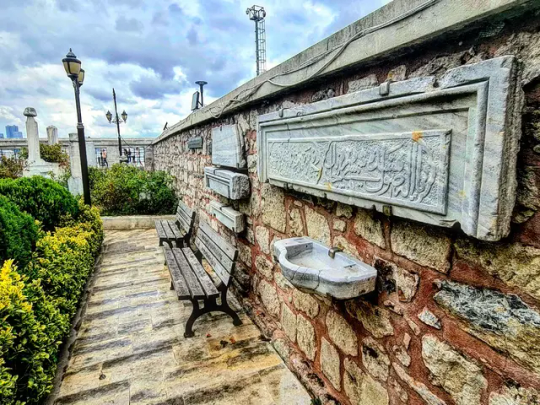
History can be found everywhere in Istanbul
#photography#travel#world travel#picoftheday#travelling#photographer#photo#picture#photooftheday#travelpics#islamic history#historical#history#istanbul#turkey#travelphotoblog#travelphotography#travel photo diary#travelblogpost#travelblogger#photoblog#my photos
34 notes
·
View notes
Photo

The Timbuktu Manuscripts
Explore 40,000 manuscripts guarded by Dr. Abdel Kader Haidara and SAVAMA-DCI, showcasing Africa’s greatest written legacy.
https://artsandculture.google.com/experiment/the-timbuktu-manuscripts/BQE6pL2U3Qsu2A?hl=en
#Timbuktu#Mali#Africa#Islamic history#Arabic#books#manuscripts#history#culture#African history#knowledge
100 notes
·
View notes
Text
Reminder in Arabic translated below

⬆️
رحلة أحمد بن حنبل في طلب العام
Travels of Ahmad bin Hanbal in seeking knowledge
The red arrows show how he travelled throughout the Muslim world, from Khorasan to what is nowadays Morocco, in his search for knowledge.....
الكوفة، البصرة، مكة المكرمة، المدينة المنورة، اليمن، الشام، الثغور، المغرب، فارس، خرسان....
Al Koofah (city located in what is known today as Iraq), Al bassrah (city located in today's Iraq), Makkah Al mukarramah, Al madeenah Al munawwara, ash Shaam (Syria- Palestine), ath thagour, Al Maghrib (Morocco, Algeria), Faaris (Persia), Khorasan (in today's north Eastern Iran)...
انظُرْ كَيف كَان علماؤنا يجتهدون في طلبهم للعلم، يَقْطَعُون البحار، ويرتحلون في القفار، خُطَاهُم نفعت الإسلام والمسلمين، وكلامهم أنار دُرُوبَ الهُدى للسَّالكين، فرحمة الله عليهم جميعا
⚠️فلا تتكاسل يا طالب العلم، ولا تتهاون في الهدى والفهم، فهؤلاء سلفك الصالحون أدُّوا ما عليهم في أزمانهم، وعَمَّروا بالخير أعمارهم وأوقاتِهم، فنفعوا بعلمهم البلاد والعباد إلى يوم الدين
فنسأل الله أن ينفعَنا بعلومهم، وأن يرزقنا التشبه بأخلاقهم وسلوكهم، إنه على كل شيء قدير
See how our scholars used to strive to seek knowledge, traversing seas and wastelands, benefitting through their steps Islam and the Muslims. Their words enlightened our paths with guidance, so may Allah have mercy on them all.
⚠️Therefore, O seeker of knowledge, do not be lazy, and do not be negligent in finding understanding and guidance, for these are your pious predecessors, who gave their due, during their lifetimes, and filled their time with kheir (all that is good); they benefitted (many) countries with their knowledge, and (will do so) until the Day of Judgment.
We ask Allāh to benefit us with their knowledge, and to bless us with imitating their morals and behaviour. Allāh is capable of everything.
Copied from the Algerian Mashaykh upon the Manhaj of as Salaf as Salih channel
#ahlulhadith#ahlulsunnah#islamicreminder#islamic history#islamic knowledge#manhaj salaf#quran&sunnah#salaf#islampost#sunnah
72 notes
·
View notes
Text
I appreciate a video like this. So here’s a nice way of explaining how names work, whether one wants to get into Islamic History, or if one wishes to understand names within other cultures or names before our modern era.
So, he for sure knows what he’s talking about, but other YouTube videos always kill me when they start referring to an Arab/Islamic figure by their father’s name. Like it doesn’t make sense to call “Nasir ibn Sayyar” by the name “Sayyar” after you’ve introduced him. That’s not his surname lol. I need everyone to understand that part.
youtube
44 notes
·
View notes
Text
Hamas Charter 1988: "Palestine is an Islamic Waqf land... the same goes for any land the Moslems have conquered by force, because during the times of (Islamic) conquests, the Moslems consecrated these lands to Moslem generations till the Day of Judgement.
"It happened like this: When the leaders of the Islamic armies conquered Syria and Iraq, they sent to the Caliph of the Moslems, Umar bin-el-Khatab, asking for his advice concerning the conquered land - whether they should divide it among the soldiers, or leave it for its owners, or what? After consultations and discussions... it was decided... the real ownership of the land and the land itself should be consecrated for Moslem generations till Judgement Day." - Hamas Charter, Article 11
But sure, Israeli/Judaism was founded on a violent colonial religion. :/
#am yisrael chai#jumblr#jewblr#jewish#judaism#islamic history#bolded parts added by me#antisemitism#antisemitic#double standards#israel solidarity#israel palestine conflict#i stand with israel#antisemetic double standards#i swear to god muslims/palestinians can do no wrong#and israelis/jews can do no right with some people
17 notes
·
View notes
Text
The Lavon Affair

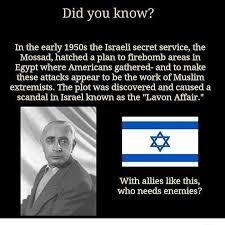
The Lavon affair was a failed Israeli covert operation, codenamed Operation Susannah, conducted in Egypt in the summer of 1954.
As part of a false flag operation, a group of Egyptian Jews were recruited by Israeli military intelligence to plant bombs inside Egyptian-, American-, and British-owned civilian targets: cinemas, libraries, and American educational centers.
The attacks were to be blamed on the Muslim Brotherhood, Egyptian communists, “unspecified malcontents”, or “local nationalists” with the aim of creating a climate of sufficient violence and instability to induce the British government to retain its occupying troops in Egypt’s Suez Canal zone.
The operation resulted in the deaths of four operatives.
The overseer of the operation allegedly informed the Egyptians, after which 11 suspected operatives were arrested. Two committed suicide after being captured, two were executed by the Egyptian authorities, two of them were acquitted at trial, and the remaining five received prison terms ranging from 7 years to life in prison.
Source: Wikipedia
#palestine#islamophobia#palestinians#gaza#free palestine#islam#israel#photography#false flag#free gaza#gaza strip#gaza genocide#gazaunderattack#palestine genocide#genocide#history#islamic history#world hijab day#global history#middle east#gaza under attack#gaza news#gaza war#gazan genocide#gaza now#gazan families#gazan amputees are delivering aid to children by bike during the israel hamas war#rafah#ghazza#hamas
50 notes
·
View notes
Text

مَنْ مَنَّ مِنْ مَنٍّ مُنَّ مِنَ الْمَنَّانِ
-Men menne min mennin munne minel'mennâni-
"Kim bir iyilikte bulunursa 'Mennân' olan Cenâb-ı Allah'tan iyilik bulur."
#iyilik#Allah#karşılık#tekerleme#arapça#özlü sözler#hikmetli sözler#arabic#arabisch#islamic#islamic history
71 notes
·
View notes
Text
Twelve thousand children who have been killed by Israel in the last five months alone.


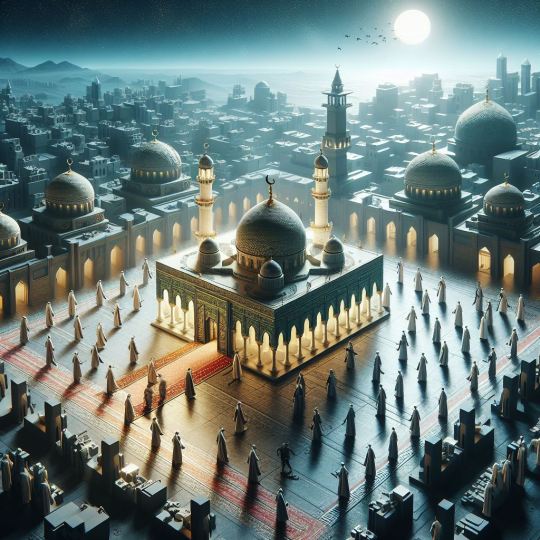

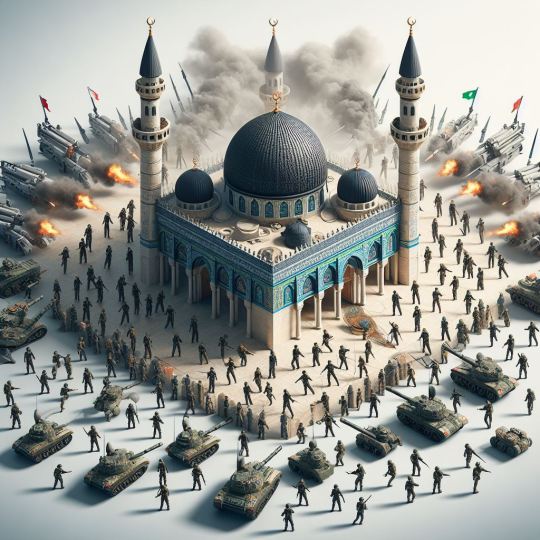






#Ward is one of twelve thousand children who have been killed by Israel in the last five months alone.#CeasefireNOW#StopArmingIsrael#HistoryNeverForgets#NeverVoteBiden#Genocide_in_Gaza#srkshaju#srkshazu#islamic history#muslim ummah#islam#islamic#al aksha#al aqsa mosque#al aqsa flood#al aqsa storm#free gaza#gaza genocide#gazaunderattack#free palestine#palestine genocide#flour massacre#gaza strip#gaza
8 notes
·
View notes
Text

The Dome of the Rock is one of the most beautiful and historically important landmarks in Palestine!
🇵🇸💛🇵🇸
🇵🇸💙🇵🇸
#history#al aqsa#dome of the rock#jerusalem#palestine#architectural history#middle east#islam#landmarks#medieval#palestinian history#abrahamic religions#Islamic golden age#prophet muhammad#islamic history#free palestine#wonders of the world#medieval history#architecture#holy sites#historical landmarks#nickys facts
28 notes
·
View notes
Text
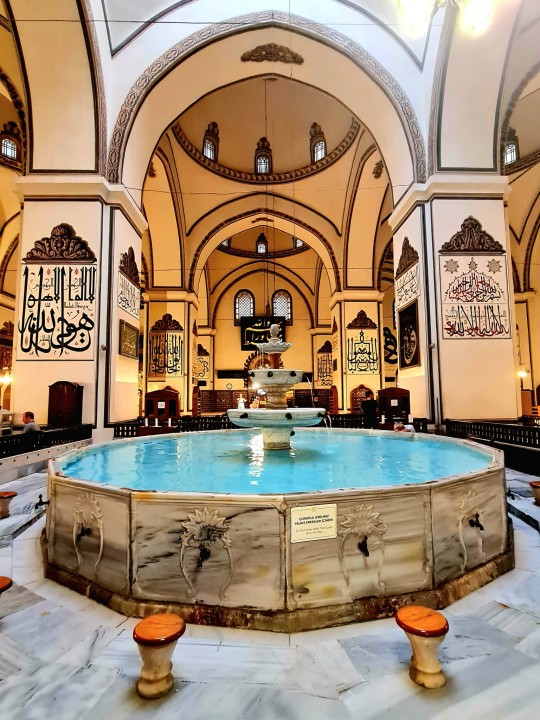
Ablution facilities inside the grand Mosque of Bursa.
#photography#travel#world travel#picoftheday#travelling#photographer#photo#picture#photooftheday#travelpics#bursa#turkey#photoblog#my photos#picturesque#mosque#masjid#islamic history#faith islam#islamic architecture#islam#architecture photos#travelblogger#travelbug#travelphotoblog
17 notes
·
View notes
Text
Pictured are Ottoman soldiers with the Ottoman standard of Gazzah, given to the 79th Infantry Regiment which defended Gazzah, Ottoman Falasteen in the First Battle of Gazzah during World War I, c. 1917 CE (1335/1336 AH)
The First Battle of Gazzah took place on March 26, 1917 CE (2/3 Jumada al-Thani, 1335 AH).
The Ottomans successfully defended the city on this occasion and again in April 1917 CE (Jumada al-Thani 1335 AH) at the Second Battle of Gazzah, but thereafter lost the Third Battle of Gazzah in November 1917 CE (Muharram 1336 AH).
By December 1917 CE (Safar 1336 AH), the Ottomans then lost Al Quds (Jerusalem) ending their 400 year old rule (1517-1917 CE) of modern-day Falasteen and their custodianship over Bayt al-Maqdis (Al Aqsa).

#islam#muslim#history#islamic history#history blog#gaza#free gaza#gaza strip#palestine#falasteen#falastin#world war 1#ottoman history#ottomans#ottoman#osmanli#masjid al aqsa#al aqsa mosque#al quds
17 notes
·
View notes